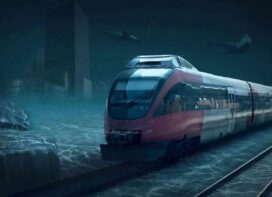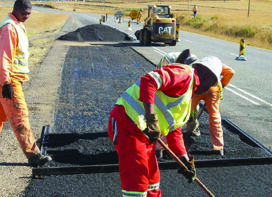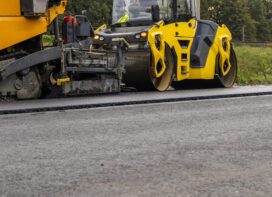
One of the challenging rail projects undertaken by Rail Vikas Nigam Limited is Rishikesh Karanprayag Rail Link, which is a 125 km long Rail section from Rishikesh to Karanprayag. It is part of a larger scheme to enhance connectivity for “Char Dham” yatra. The entire section passes through the mountain section of the Himalayas which is known for its complex and fragile geology. The total project is divided into 10 packages (out of which Pkg-4 includes bored tunnels). The project is being designed for twin rail lines. L&T is undertaking two complex packages of this Rail Project.
- Package 2: This package extends from Ch. 18.6 to Ch. 33.0 (total length: ~14.4 km). The scope includes construction of 2 no. of Tunnels (T2 and T3) of length 6.09 km and 6.67 km (totalling to 12.76 km of Main Tunnel and 12.76 km of Escape Tunnel) using Drill and blast method; construction of Major Railway Bridges; 50 m Adit at junction of main and escape tunnel.
- Package 4: This package extends from Ch 47.3 to Ch. 63.1 (total length: ~ 15.8 km). The scope includes construction of 2 nos. of TBM Bored Tunnel (for up and down line) of combined length 21.3 km; NATM Tunnels of 8 km, construction shaft and embankment etc.
The Himalayan topography with complex geology is encountered by diverse challenges such as difficult terrain conditions, thrust zones, shear zones, folded rock sequence, in-situ stresses, rock cover, ingress of water, geothermal gradient, ingress of gases, high level of seismicity etc. The goal of modern tunnelling technologies is to convert the unpredictable to predictable.
Tunnels are generally located in difficult environments in rocks of various types of hard or soft media and the alignment may traverse zones of various complexities.
It is important that such tunnelling projects are properly conceptualized and planned systematically to ensure smooth implementation. It is also to be ensured that adequate investigations have been carried out, proper selection of tunnelling equipment has been made, appropriate contracting practices are available, statutory clearances has been taken and competent construction agencies are available & duly considered.
By bringing in modern tunnel prediction tools, the risk of operating in unknown geology is brought down from critical to medium. Adverse geological condition was anticipated well in advance and the necessary step as and when such situations have been encountered is taken adequately.
The main geology challenges are: unpredictable geology and surprises; reactive approach post face exposure and water ingress & major collapse.
Safety preparedness is ensured as we can always track the live count of men and machinery inside the tunnel. The detailed report (IN/Out/Live) is kept in record in cloud-based platform and can be accessed anywhere anytime. Live people and vehicle details can also be seen in mobile apps any time anywhere.
Operational Advantages include: Spatial investigation ahead of the face; detection of hazardous fault zones & cavities; exploration of water bearing formations; discovery of changes in rock mechanical properties and better monitoring in terms of safety and productivity.
Eleswarapu Srinivas – Head, Business Development, Heavy Civil Infrastructure IC, L&T Construction.
 TrafficInfraTech Magazine Linking People Places & Progress
TrafficInfraTech Magazine Linking People Places & Progress


